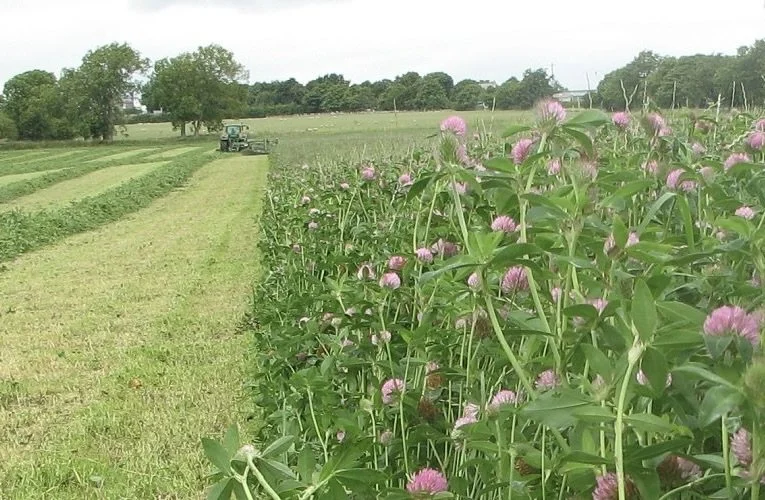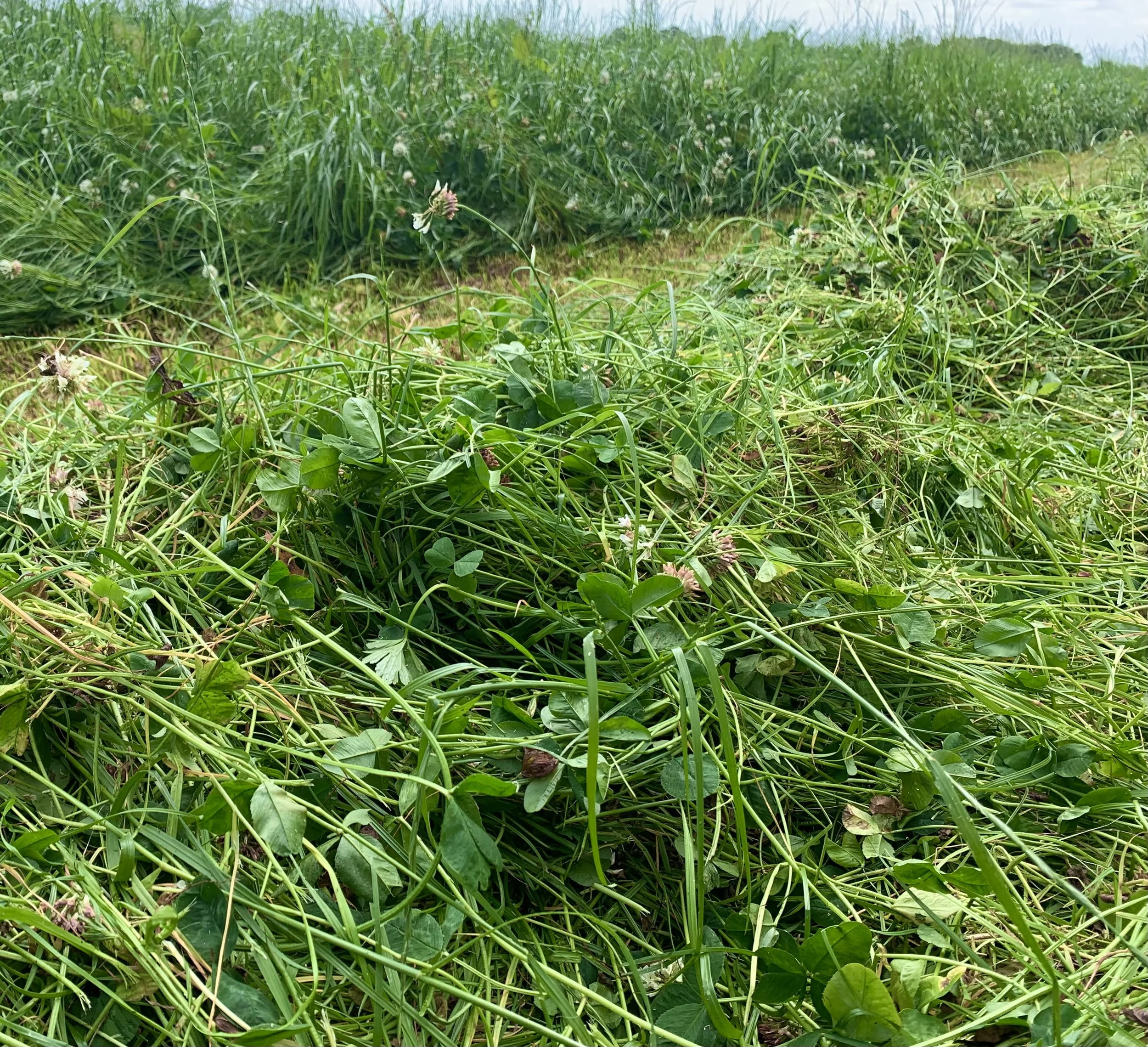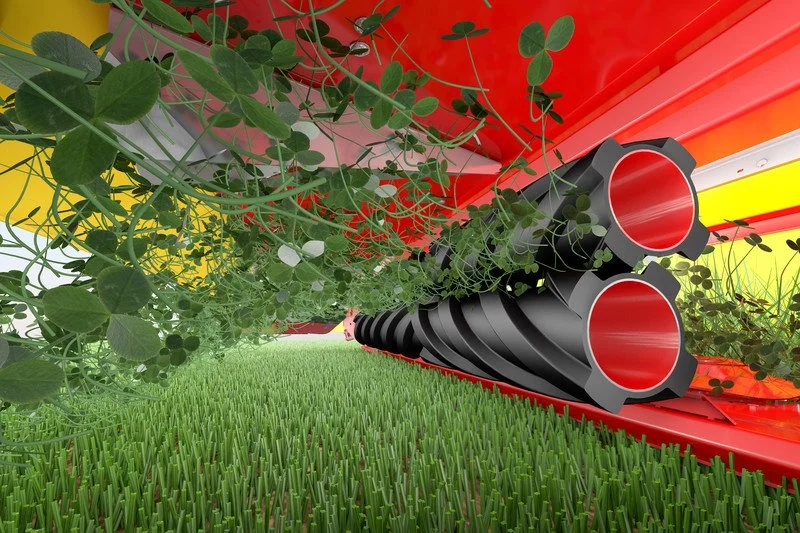How to make Red Clover silage
You might have already thought about multi species or herbal ley silage, but if that’s not for you, what about crops of full clover. And even if not fully one hundred percent clover, crops that are very highly dominated by clover, what are the key points to make good silage out of these crops?
Well there are some things you need to be careful of and some pitfalls to avoid but firstly what are the main plus points for utilising clover as a forge crop?
What is the main advantage of making clover silage?
The most obvious advantage of clover is its ability to take nitrogen from the air, fix it into the soil and make it available for other, or subsequent, crops. More accurately it’s the bacteria living on the clover roots that do this but this is not really the point of this article. What is more relevant, is the current cost of artificial fertilisers and in particular the nitrogen element. These reached all time highs in the months following the war in Ukraine and this has led more and more farmers to look at alternative options to make extra nitrogen available in their soils. Hence the interest in clover crops.
One issue that’s often over looked is the availability of this nitrogen in high clover mixed grass swards. Normally you would wait 6-8 weeks (depending on the weather) between applying nitrogen and taking a silage cut but here, the nitrogen is in constant supply. To try and limit the problem, it is recommended that the clover is no more than 30% of the crop. If in doubt, test the forage before you send in the mowers.
There is more to clover than just nitrogen fixing
In addition to the nitrogen fixing, clover is a high protein forage for ruminant livestock. Typical protein levels in red clover can be 16-20% compared to even a good grass silage that might be 12-14%. That’s a significant difference but the figures don’t tell the whole story. Before you get too excited, you need to consider the actual crop yield compared to straight grass silage.
Red clovers grown in a rye grass sward can readily generate 12 to 16 tonnes of dry matter per hectare. In figures we all understand about 40 to 55 tonnes fresh matter per hectare or 16 to 22 tonnes fresh weight per acre. And for just a pure clover crop, more like 11-14t her hectare of dry matter over 4 cuts. That’s something like 2 to 2.5 tonnes of protein per hectare or about a tonne per acre.
Comparing this to a new ley rye grass sward, you might be getting 13t per hectare at 13% protein so about 1.7t per hectare or 0.7t of protein per acre. This makes red clover is about 30% more productive in terms of pure protein. And that’s compared to a new ley, a permanent pasture might only produce about half that of new seeds, so about 0.3t per acre. There is definitely more to red clover than nitrogen fixing!
Which clover is best for silage red or white?
Red seems to be the most popular for preserving as forage because of its more upright growth habit and it is more productive . White clover growth habit makes it more suited to grazing as a mixed sward, albeit swards that can be harvested as silage too. The main issue with silage from white clover mixed swards is maintaining the population diversity. Cut too often and the grasses can begin to get swamped by the cover. This can become a problem because it can allow other weeds into the sward and can also make the clover vulnerable to winter kill if there is not enough grass to protect it.
Clover swath
Red clover is more upright and able to withstand more frequent cutting, but it’s not a hardy crop. A reseed will only last about 4 years at most - I guess its like the old adage, you don’t get anything for nothing…
How do you make silage from red clover?
The basic rules apply to any mown forage crop cut for silage - you need to quickly wilt the crop and avoid excessive losses and soil contamination. With clover this bit can be a little more tricky. The crop is physically different to grasses in that the leaves are very fragile, the stalks are quite robust and the moisture content is (usually) quite high at the point of cutting. So wilting is not straight forward.
Mowing with a conditioner generally speeds up wilting but a tine conditioner has the reputation for stripping clover leaves. In my very limited experience, this depends on the growth stage and some high density clovers can be successfully cut with tine conditioner mowers. If you need to cut with this type of mower, choose the lowest rotor speed and open the conditioner hood right up. However whilst it may be possible, it might be better to avoid tine conditioners unless the driver completely understands the risks.
Roller conditioners are really designed for this type of crop but they are very rare outside parts of the world that grow large areas of lucern, or alfalfa. If you can’t get access to a roller conditioner mower then you might just have to put up with a plain mower and live with the increase wilting time that might lead to.
Pottinger NovaCat conditioner
The risks of tedding clover crops
There are a couple of risks with tedding clover crops. Firstly as the crops dry, the leaves become extremely brittle and they will shatter as fast as you can say “too much pto speed”. The other issue is soil contamination because the stubbles on high clover crops tend to be more open than a grass stubble so there is more chance of you rolling the crop in bacteria laden soil.
There isn’t really much else you can do to speed the wilting. Cut the stubble a bit higher than grass, somewhere around 3” or 70mm is a good guide. Cut the crop before the stems become really “woody” is also a good tip. But the main factor is time, so give the crop a bit longer to wilt, at the very least 24 hours, but 48 hours is more likely. You still need to get to 30% dry matter as a guide, 35% might be better, so don’t be in a rush to pick up.
Why a long wilt isn’t always so bad
Long wilting periods usually mean the crop spends a long time in the swath respiring. And respiring once cut means using up the plants stored sugars. In the case of clover, the sugar levels are nothing special in the first place so isn’t this a massive problem? Maybe not because the chances are you weren’t growing clover for its energy content anyway. Grass and maize are much more an “energy crop”; consider your clover as a “protein crop”. Look at it this way, with the clover silage as just one component of your TMR, and lower sugars are not such a disaster.
Where the lack of sugar is a problem is under the covers, once the sheets are on. Then the lack of sugar can leave hungry bacteria a “good dinner” short of a proper fermentation! In addition, clover has a higher buffer capacity than grass meaning that it required more acid to get the pH to drop.
The best solution for this is to add a little sweetener to the deal, usually in the form of molasses. Adding an enzyme to break down lignins into available carbohydrates might not be a great idea because there is a risk to the valuable proteins - but that’s a story for another day.
Chopping and compacting clover silage
Once you have the crop ready to be ensiled, there isn’t too much else to consider. Check out the wilted crop and asses the stalk “hardness” before you decide on the chop length. Ideally you might want to chop clover a little shorter than you would normally chop grass because the woody stems can make the silage face more porous and led to aerobic instability. Get the chop length right and compacting will be straight forward.
Try and cut down the “blow distance” between the harvester spout and the trailers because the leaves are easily lost on the wind. Other than that it’s similar to grass silage, oh and don’t forget the aftermath. Just because the crop fixes nitrogen, don’t forget about the potassium, phosphates and sulphur levels. As stated earlier, you don’t get anything for nothing and remember for replace what you have taken away.
If you want to know more about making clover silage or would like to discuss any other aspects covered in this series, contact me at jeremy@silageconsultant.co.uk


